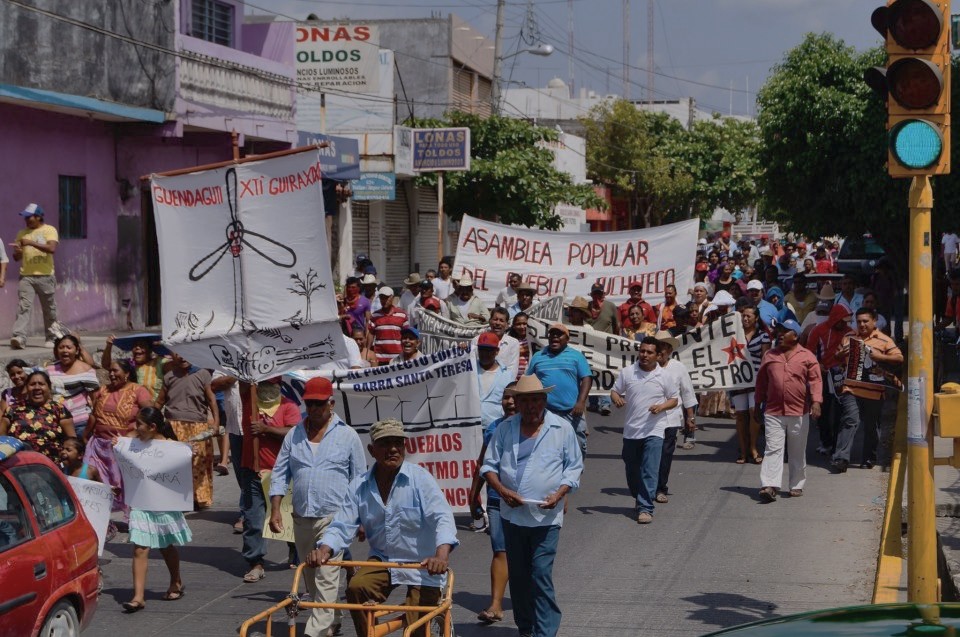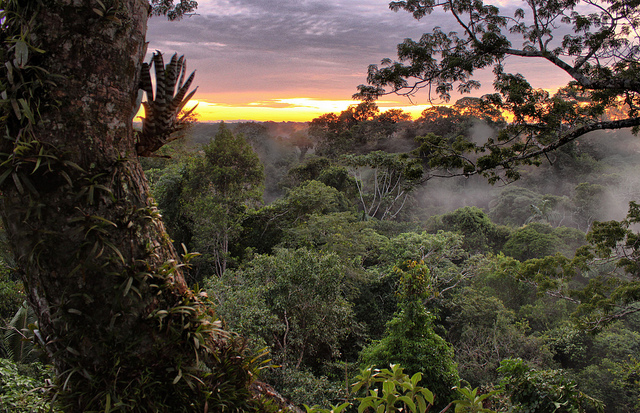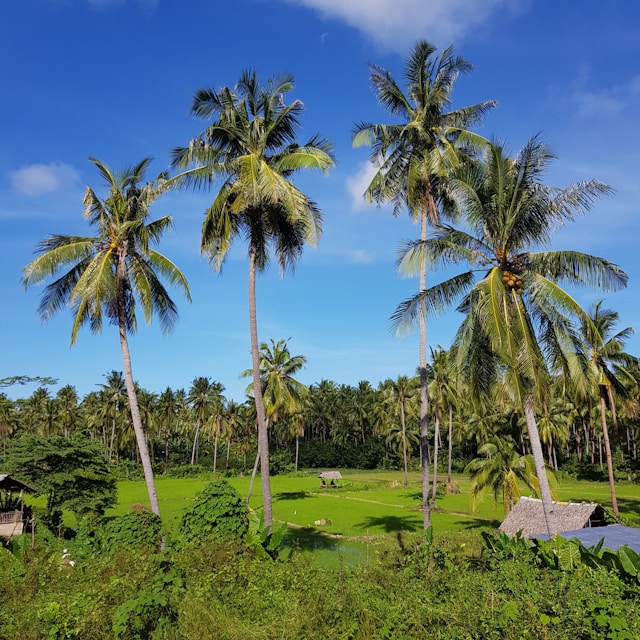
by DGR News Service | Sep 6, 2014 | Agriculture, Education, Lobbying
By Norris Thomlinson / Deep Green Resistance Hawai’i
Open Sesame examines the importance of seeds to humans as the genesis of nearly all our domesticated foods. It details the tremendous loss in varietal diversity of our crops over the last century, due in large part to increasing corporate control over the seed market.
Farmers and gardeners in every region once had access to dozens of varieties of each vegetable and staple crop, finely adapted to the specific growing season, temperatures, rainfall patterns, insects, diseases, and soils of their area. With few people now saving their own seed, we’ve entrusted our food supply to a handful of seed companies selling the same handful of varieties to growers across the US. This will prove increasingly problematic as climate chaos increases divergence from climatic norms. We need a return to seed saving and breeding of numerous local varieties, each starting from a baseline adaptation to the specific conditions of each area. Diversity gives a better chance of avoiding complete catastrophic crop failure; this variety may yield in the heavy rains of one year, while that variety may succeed in the drought of the next.
The film shows beautiful time lapse sequences of seeds sprouting and shooting into new life. Even rarer, it shows people feeling very emotional about seeds, displaying extra-human connections we normally only see with domesticated pets, and hinting at the human responsibility of respectful relationship with all beings described by so many indigenous people. The movie highlights great projects from seed schools and the Seed Broadcast truck educating people on why and how to save seed, to William Woys Weaver and others within Seed Savers Exchange doing the on-the-ground work of saving varieties from extinction, to Hudson Valley Seed Library trying to create a viable business as a local organic seed company.
Civilization and Agriculture
Unfortunately, Open Sesame has an extremely narrow focus. Though it rightly brings up the issue of staple crops, which many people ignore in their focus on vegetables, it trumpets our dependence on grains, even showing factory farmed cattle, pigs, and chickens in an uncritical light. This assumption that humans need annual crops reveals an ignorance of agriculture itself as a root cause of our converging environmental crises. Even before industrialism accelerated the destruction and oppression, civilization and its cities, fed by organic agriculture, was eroding soil, silting up waterways, turning forests into deserts, and instituting slavery and warfare. Though the diminished diversity within our food crops should indeed cause concern, the far greater biodiversity loss of mass species extinctions under organic agriculture should spark great alarm, if not outright panic.
In one scene, the documentary shows a nighttime urban view of industrial vehicles and electric lights, bringing to mind the planetary destruction enacted by the creation and operation of these technologies. Beneath the surface, this scene contains further social and imperialistic implications of packing humans into artificial and barren environments. The residents of this scene are fully reliant on imported food and other resources, often stolen directly, and all grown or mined from land stolen from its original human and non-human inhabitants. But the film goes on to point out, without any irony, that all civilizations began with humans planting seeds, as if the only problem we face now is that industrialization and corporate control applied to agriculture threaten the stability of otherwise beneficial systems.
In a similar disconnect, Open Sesame proclaims the wonders of gardening, farming, and “being in nature” while showing simplified ecosystem after simplified ecosystem ― annual gardens and fields with trees present only in the background, if at all. As any student of permaculture or of nature could tell you, the disturbed soil shown in these human constructions is antithetical to soil building, biodiversity, and sustainability. The film describes seeds “needing” our love and nurturing to grow, positioning us as stewards and playing dangerously into the dominating myth of human supremacism. Such dependence may (or may not) be true of many of our domesticated crops and animals, but I think it crucial to explicitly recognize that in indigenous cultures, humans are just one of many equal species living in mutual dependence.
Though the documentary chose not to tackle those big-picture issues, it still could have included perennial polycultures, groups of long-lived plants and animals living and interacting together in support of their community. For 99% of our existence, humans met our needs primarily from perennial polycultures, the only method proven to be sustainable. The film could have chosen from hundreds of modern examples of production of vegetables, fruit, and staple foods from perennial vegetable gardens, food forests, and grazing operations using rotating paddocks. Even simplified systems of orchards and nutteries would have shown some diversity in food production options. Besides being inherently more sustainable in building topsoil and creating habitat, such systems rely much less on seed companies and help subvert their control.
Liberal vs Radical
The Deep Green Resistance Youtube Channel has an excellent comparison of Liberal vs Radical ways of analyzing and addressing problems. In short, liberalism focuses on individual mindsets and changing individual attitudes, and thus prioritizes education for achieving social change. Radicalism recognizes that some classes wield more power than others and directly benefit from the oppressions and problems of civilization. Radicalism holds these are not “mistakes” out of which people can be educated; we need to confront and dismantle systems of power, and redistribute that power. Both approaches are necessary: we need to stop the ability of the powerful to destroy the planet, and simultaneously to repair and rebuild local systems. But as a radical environmentalist, I found the exclusively liberal focus of Open Sesame disappointing. There’s nothing inherently wrong with its take on seed sovereignty; the film is good for what it is; and I’m in no way criticizing the interviewees doing such great and important work around seed saving and education. But there are already so many liberal analyses and proposed solutions in the environmental realm that this film’s treatment doesn’t really add anything new to the discussion.
A huge challenge I have with liberal environmentalism is its leap of logic in getting from here (a world in crisis) to there (a truly sustainable planet, with more topsoil and biodiversity every year than the year before.) Open Sesame is no exception: it has interview after interview of individuals carrying out individual actions: valuable, but necessarily limited. Gary Nabham speaks with relief on a few crop varieties saved from extinction by heroic individual effort, but no reflection is made on the reality of how much we’ve lost and the inadequacy of this individualist response. We see scene after scene of education efforts, especially of children. We’re left with a vague hope that more and more people will save their own seed, eventually leading to a majority reclaiming control over their plantings while the powerful agribusiness corporations just fade away. This ignores the institutional blocks deliberately put in place precisely by those powerful companies.
The only direct confrontation shown is a defensive lawsuit begging that Monsanto not be allowed to sue farmers whose crops are contaminated by patented GMOs from nearby fields. The lawsuit isn’t even successful, and the defeated farmers and activists are shown weary and dejected, but with a fuzzy determination that they can win justice if they keep trying hard enough. The film could instead have built on this example of the institutionalized power we’re up against and explored more radical approaches to force change. Still within the legal realm, CELDF (Community Environmental Legal Defense Fund) helps communities draft and pass ordinances banning things like factory farming, removing corporate personhood, and giving legal rights to nature within a municipality or county. Under such an ordinance, humans could initiate a lawsuit against agricultural operations leaching chemicals and sediment, on behalf of an impacted river. This radical redistribution of decision making directly confronts those in power and denies them the right to use it against the community and the land.
In the non-legal realm, underground direct attacks and aboveground nonviolent civil disobedience have successfully set back operations when people have cut down GMO papayas, burned GMO sugar beets, and sabotaged multiple fields and vineyards. The ultimate effectiveness of these attacks deserves a whole discussion in and of itself, but they would have been worth mentioning as one possible tactic for ending agribusiness domination of our food supplies.
In a perfect demonstration of the magical thinking that wanting something badly enough will make it happen, the documentary concludes with a succession of people chanting “Open sesame!” We’ve had 50 years of experience with this sort of environmentalism, long enough to know it’s not working. We also know that we, and the planet, have no time left to waste. We need to be strategic and smart in our opposition to perpetrators of destruction and in our healing of the damage already done. The Decisive Ecological Warfare strategy of Deep Green Resistance offers a possible plan for success, incorporating all kinds of people with all kinds of skills in all kinds of roles. If you care about the world and want to change where we’re headed, please read it, reflect on it, and get involved in whatever way makes the most sense for you.

by DGR News Service | Jun 17, 2014 | Indigenous Autonomy, Mining & Drilling
Deep Green Resistance is dedicated to the fight against industrial civilization and its legacy of racism, patriarchy, and colonialism. For this reason, DGR would like to publicly state its support for the Oglala Lakota in their current fight against the genocidal mining operations of the Cameco Corporation.
Cameco is currently attempting to expand its already illegal resource extraction campaign despite undeniable evidence that their abuse of the Earth is leading to increased rates of cancer, diabetes, and other life-threatening illnesses among the Lakota people.
The only acceptable action on the part of the Cameco Corporation is immediate cessation of any and all mining activities in the ancestral home of the Lakota people; anything else will be met with resistance, and DGR will lend whatever support it can to those on the front lines.
The indigenous peoples of this land have always been at the forefront of the struggle against the dominant culture’s ecocidal violence, and DGR would like to offer its support and encouragement to Debra White Plume, the Lakota activist group Owe Aku, and all other indigenous women and men fighting for the future of the planet. The time for resistance is long past, and we are thankful every day that the Earth has warriors like the Oglala Lakota fighting in its defense.
For more information, please visit Owe Aku International at http://oweakuinternational.org/

by DGR News Service | Jun 17, 2014 | Biodiversity & Habitat Destruction, Indigenous Autonomy
Deep Green Resistance stands in sympathy and solidarity with Don Celestino Bartolo and the farmers and residents of the municipality of Juchitan de Zaragoza as well as all those who live on the Isthmus of Tehuantepec, as they suffer and resist Gas Natural Fenosa’s Biío Hioxo Wind Energy project. Like most large infrastructure projects, the Biío Hioxo Energy project ignores how indigenous communities use the land for food, sacred places, and community integrity. This project harms the land by destroying soils, forests, and natural spaces, as well as with noise and visual pollution.
Projects like this threaten the way of life of the residents of Juchitan de Zaragoza and the Isthmus of Tehuantepec, and destroy the land. It is typical of the destructiveness of civilization and the unbridled greed of capitalism. Biío Hioxo Energy also serves as an object lesson in the folly of green technology, and deserves our condemnation and resistance.
Indigenous peoples have always been at the forefront of the struggle against the dominant culture’s ecocidal violence. We are heartened by the strength of the people of Tehuantepec, who are resisting with strength and desperation. DGR offers its support and encouragement to those on the front lines of the fight to save the planet, and despite our lack of experience and membership in the region we will support the struggle in whatever way we can.
For more information on the Biío Hioxo project, see http://www.cipamericas.org/archives/12042

by DGR News Service | May 22, 2014 | Indigenous Autonomy, Mining & Drilling
By Agence France-Presse
The license comes just days after a petition for a referendum on the project was rejected by the country’s election authorities.
The action, signed by Environment Minister Lorena Tapia, gives a state company, Petroamazonas, rights to develop an oil field in part of the forest designated a UNESCO Biosphere Reserve.
Home to two indigenous tribes that have resisted contact with the outside world, the rainforest park covers an expanse of more than 9,800 square kilometers [3784 square miles] between two rivers.
The field, known as Tiputini, is part of a vast bloc that lies partially within the park with proven reserves of 920 million barrels of crude.
Petroamazonas was also granted a license to develop the Tambococha field, which lies outside the park but within the same oil development bloc.
Yasunimos, an environmentalist group, has fought government plans to open the park to oil development, gathering what it said were nearly 728,000 signatures on a petition to put it to a referendum.
But on May 9, Ecuador’s National Electoral Council invalidated half the signatures and rejected the petition, clearing the way for Thursday’s action.
The decision, however, could be appealed to the country’s constitutional court.
In October, Ecuador’s Congress approved a government plan to develop the Yasuni oil reserves, on the promise that revenues would be used to eradicate poverty.
From Physorg: http://phys.org/news/2014-05-ecuador-oil-amazon-reserve.html
by DGR News Service | Apr 27, 2014 | Obstruction & Occupation, Toxification
By Dan Collyns / The Guardian
Around 500 Achuar indigenous protesters have occupied Peru’s biggest oil field in the Amazon rainforest near Ecuador to demand the clean-up of decades of contamination from spilled crude oil.
The oilfield operator, Argentine Pluspetrol, said output had fallen by 70% since the protesters occupied its facilities on Monday – a production drop of around 11,000 barrels per day.
Native communities have taken control of a thermoelectric plant, oil tanks and key roads in the Amazonian region of Loreto, where Pluspetrol operates block 1-AB, the company said on Thursday.
Protest leader, Carlos Sandi, told the Guardian that Achuar communities were being “silently poisoned” because the company Pluspetrol has not complied with a 2006 agreement to clean up pollution dating back four decades in oil block 1-AB.
“Almost 80% of our population are sick due to the presence of lead and cadmium in our food and water form the oil contamination,” said Sandi, president of FECONACO, the federation of native communities in the Corrientes River.
Pluspetrol, the biggest oil and natural gas producer in Peru, has operated the oil fields since 2001. It took over from Occidental Petroleum, which began drilling in 1971, and, according to the government, had not cleaned up contamination either.
Last year, Peru declared an environmental state of emergency in the oil field.
But Sandi said the state had failed to take “concrete measures or compensate the native people” for the environmental damage caused.
He claimed Achuar communities were not receiving their share of oil royalties and the state had failed to invest in development programmes in the Tigre, Corrientes and Pastaza river basins that had been most impacted by oil exploitation.
He said the Achuar were demanding to meet with the central government to talk about public health, the environment and the distribution of oil royalties.
“We aren’t against oil exploitation or development we are calling for our rights to be respected in accordance with international laws,” he said.
“Conversations are under way to bring a solution to the impasse,” Pluspetrol told Reuters. “A government commission is there and we hope this is resolved soon.”
Over the past year, the Peruvian government has declared three environmental emergencies in large areas of rainforest near the oil field after finding dangerous levels of pollution on indigenous territories.
Peru’s Environment Ministry said in a statement last week that a commission formed by government and company representatives has been assigned to work with communities to tackle pollution problems and other concerns.
From The Guardian: http://www.theguardian.com/environment/2014/apr/25/indigenous-protesters-occupy-perus-biggest-amazon-oilfield

by DGR News Service | Apr 6, 2014 | Colonialism & Conquest, Defensive Violence, Mining & Drilling, NEWS, Property & Material Destruction
By Mindanao Examiner
New People’s Army rebels on Saturday raided a mining firm in the southern Philippine province of Agusan del Norte, reports said.
Reports said the rebels swooped down on Philippine Alstron Mining Company on the village of Tamamarkay in Tubay town and overpowered the security guards without firing a single shot before they torched several trucks and other heavy equipment.
The rebels also seized at least 6 shot guns and short firearms from the company’s security arsenal. There were no reports of casualties.
The raid came following threats made by the NPA on mining firms operating in the southern Philippines.
Just last month, rebel forces attacked a police base and government troops in Davao del Sur’s Matanao as punishment for their “reign of terror” against indigenous tribes and other communities opposing mining operations in the province.
Dencio Madrigal, a spokesman for the NPA-Valentine Palamine Command, said the deadly attacks were a punishment for police and military units protecting Glencore Xstrata. He accused the mining firm of exploiting nearly 100,000 hectares of ancestral lands of indigenous Lumad Blaans tribes, and peasants in the region.
Jorge Madlos, a regional rebel spokesman, also warned mining firms and fruit plantations in the region, saying military operations in Mindanao have escalated and have become more extensive with the aim to thwart the ever growing and widespread people’s protest against destructive mining operations and plantations.
Madlos said among their targets are Russell Mines and Minerals, Apex Mining Corp. and Philco in southern Mindanao; Dolefil, Del Monte and Sumifru plantations in northern Mindanao; TVI Resource Development Philippines in western Mindanao whose operations inside the ancestral domain of indigenous Subanen and Moro tribes are being opposed by villagers.
NPA and Moro rebels had previously attacked TVI Resources in Zamboanga province.
“If one recalls, more than 400 families were forced to evacuate their ancestral lands because of TVI and the ruthless military operations that ensued to protect it in Buug, Zamboanga del Sur. In order to defend the people’s human rights and general wellbeing, the NPA launched tactical offensives against TVI as well as against units of the AFP-PNP-CAFGU protecting it, such as the ambush on February 2012 that hit elements of the army intelligence group operating on the behest of TVI and the imposition of the local government to allow TVI mining operations on Subanen ancestral lands is one of the bases the NPA raided on April 9, 2012 the PNP station in Tigbao, Zamboanga del Sur,” Madlos said.
NPA rebels also intercepted a group of army soldiers who were using a borrowed truck from TVI and disarmed them in Diplahan town in Zamboanga Sibugay province two years ago. The rebels also burned the truck before releasing the soldiers.
“In view of these events, the NDFP in Mindanao calls upon the Lumad and Moro peoples, peasants and workers, religious and other sectors to further strengthen their unity and their courage to oppose the interests of imperialist mines and plantations, which are exceedingly damaging to Mindanao, to its people and to the environment. We call upon the units of the NPA in Mindanao to be ever more daring in their defense of people’s interests against the greed and rapacity of the local ruling classes and their imperialist master,” Madlos said.
TVI Resource Development Philippines has repeatedly denied all accusations against them. It recently ended its gold mining operation in Mount Canatuan in Zamboanga del Norte’s Siocon town after several years of operations and now has a gold-silver project in the town of Bayog in Zamboanga del Sur province and a nickel plant in Agusan del Norte province.
From Mindanao Examiner: http://www.mindanaoexaminer.com/news.php?news_id=20140405091630
Photo by Matthew De Zen on Unsplash





